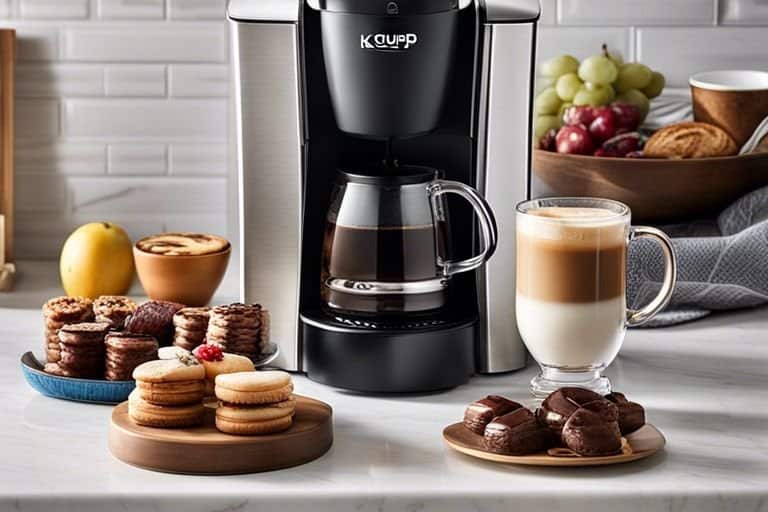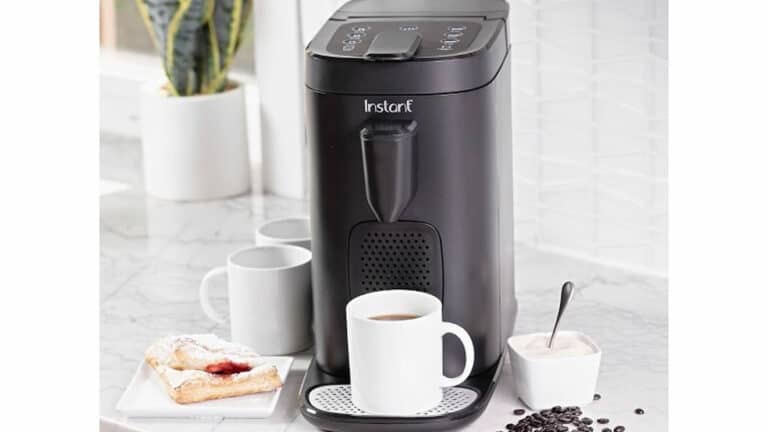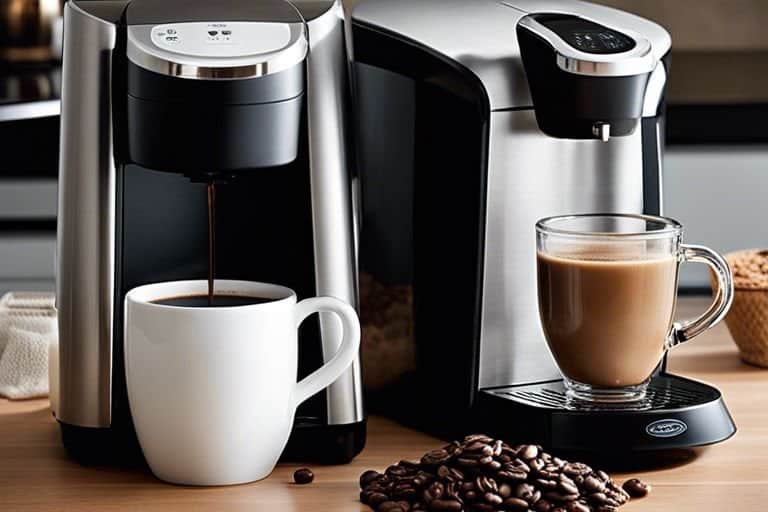Mastering the Art of Brewing Authentic Colombian Coffee: A Step-by-Step Guide

Colombian coffee is renowned worldwide for its rich flavor, tantalizing aroma, and impeccable quality. For those who truly appreciate the art of brewing a perfect cup of joe, embracing the techniques and traditions behind Colombian coffee can elevate your morning ritual to new heights.
In this comprehensive guide, we will delve into the step-by-step process of mastering the art of brewing authentic Colombian coffee. From selecting premium beans to perfecting extraction methods, join us on a journey that guarantees an unparalleled sensory experience with every sip.
Whether you are a seasoned coffee connoisseur or simply seeking to enhance your at-home brewing skills, this article offers invaluable insights and expert advice that will empower you to create exceptional cups of genuine Colombian java right in your own kitchen
The History and Origins of Colombian Coffee
Colombian coffee has a rich history dating back to the early 18th century when it was first introduced. The lush high-altitude regions of Colombia, with their volcanic soil and ideal climate, proved to be the perfect conditions for growing coffee beans. This led to rapid expansion in coffee production, making Colombia one of the world’s largest exporters.
The Arabica variety dominates Colombian coffee cultivation due to its superior flavor and aroma. It is meticulously handpicked by skilled farmers who have been practicing traditional farming methods for generations. These farmers carefully cultivate each plant with attention to detail, ensuring that only top-quality beans are harvested.
In recent years, there has been increased focus on sustainability within the Colombian coffee industry. Many farms now prioritize environmentally friendly practices such as organic farming methods and fair trade certifications. This commitment not only helps protect the natural ecosystems but also ensures fair wages for workers involved in every step of the process, from planting to exporting.
Overall, understanding the history and origins of Colombian coffee gives us further appreciation for all the effort put into producing this exquisite beverage that delights millions around the world each day.
Choosing the Best Colombian Coffee Beans: A Guide to Varieties and Roasts
Colombian coffee beans are renowned worldwide for their exceptional quality and rich flavor. Before mastering the art of brewing authentic Colombian coffee, it’s important to understand the different varieties and roasts available.
- Varieties: From bold Arabica beans to rare Geisha variety, Colombia offers a wide range of coffee options. Arabica beans dominate the market due to their smooth taste and low acidity. However, exploring other varieties like Typica or Caturra can provide unique flavors with hints of fruitiness or chocolate undertones.
- Roasts: Colombian coffee is available in various roast profiles, each offering a distinct taste experience. Lighter roasts preserve more of the bean’s natural characteristics but may have higher acidity levels. Medium-roasted coffees strike a balance between flavor development and preserving brightness while dark roasts offer bolder flavors but may sacrifice some nuance.
Remember that personal preference plays a crucial role when selecting your ideal Colombian coffee bean variety and roast profile – whether you enjoy a bright cup with floral notes or prefer a robust blend with chocolaty undertones, there is something for every palate in Colombia’s diverse selection of coffee beans.
The Importance of Grind Size and Consistency in Brewing Colombian Coffee
Achieving the perfect grind size is crucial for brewing an authentic cup of Colombian coffee. The grind size affects the extraction process, determining how much flavor is extracted from the beans. A finer grind size increases surface area and allows for more flavors to be released during brewing, while a coarser grind size extracts fewer flavors.
Consistency in grind size is also important because it ensures even extraction. If there are inconsistencies in the particle sizes, some grounds may over-extract or under-extract, resulting in an imbalanced and unpleasant taste. Using a high-quality burr grinder can help achieve uniformity in grind size.
To find the optimal grind size for your desired brew method, you may need to experiment and adjust accordingly. Generally, pour-over methods like V60 require a medium-fine grind, while espresso calls for a fine consistency. French press and cold brew methods favor a coarser ground.
Mastering both the correct grinding technique and achieving consistency will elevate your coffee experience by allowing you to fully appreciate Colombia’s unique flavors with each sip of your brewed cup.

Brewing Methods: Exploring Traditional and Modern Techniques
From traditional to modern, there are various brewing methods to choose from when it comes to making authentic Colombian coffee. Here are a few techniques you can experiment with:
- Traditional Drip Method: This classic method involves pouring hot water over ground coffee beans placed in a paper or cloth filter. The brewed coffee then drips into a carafe below. It’s simple yet effective, allowing the full flavor profile of the beans to shine through.
- French Press: Known for its simplicity and ability to retain bold flavors, the French press method involves steeping coarse-ground coffee in hot water before pressing down on a metal plunger, separating the grounds from the brew. This technique delivers a rich-bodied cup with robust taste.
- Pour-over: By carefully pouring hot water over finely ground coffee placed in a cone-shaped filter, pour-over creates a clean-tasting cup that highlights subtle nuances of Colombian coffee. This technique requires precision as you control factors like temperature and rate of pour.
Whether you prefer sticking to tradition or exploring innovative methods, finding your perfect brewing technique will help bring out the best flavors in every sip of authentic Colombian coffee
The Art of Water Temperature: Finding the Perfect Balance for Colombian Coffee
Colombian coffee holds a special place in the hearts (and taste buds) of coffee lovers worldwide. To unlock its true potential, mastering water temperature is essential.
- Why is water temperature important? The ideal brewing temperature lies between 195°F and 205°F (90°C to 96°C). Anything below this range can result in under-extraction, leading to a weak and flavorless cup. On the other hand, if the water exceeds this range, it can over-extract the beans, resulting in a bitter and harsh taste.
- Finding balance through experimentation: Achieving the perfect balance requires experimenting with different temperatures while keeping within that sweet spot. Start by using water at around 200°F (93°C) and adjust from there based on personal preference. Note how higher temperatures bring out strong flavors while lower ones create a milder brew.
- Maintaining consistency with a thermometer: Consistency is key when brewing delicious Colombian coffee consistently. Using a thermometer ensures precise control over the water temperature throughout each brew. Simply insert it into your kettle or coffeemaker’s spout during heating or boiling to monitor progress until you reach your desired level.
By understanding and controlling water temperature, you’re one step closer to unlocking an authentic Colombian coffee experience that will tantalize your senses with every sip!
Mastering Extraction: Achieving Optimal Flavor and Strength in Your Brew
To achieve the perfect flavor and strength in your Colombian coffee, mastering the extraction process is essential. Here are some key steps to follow:
- Grind size matters: Be sure to select the right grind size for your brewing method. If it’s too fine, the coffee will become bitter; if it’s too coarse, it may taste weak.
- Water temperature: Use water that is between 195°F and 205°F (90°C – 96°C). This range allows for proper extraction without scorching or under-extracting the beans.
- Proper brew time: Find the optimal brew time based on your preferred strength. Generally, a longer brew time results in a stronger coffee, but be careful not to over-extract as this can lead to bitterness.
- Stirring technique: While brewing, occasionally stir gently to ensure even saturation of grounds and promote consistent extraction throughout.
- Brewing ratio: Experiment with different ratios of coffee to water until you find what suits your taste buds best – typically around one ounce (28 grams) of ground coffee per every 16 ounces (473 milliliters) of water.
Remember that achieving mastery requires practice and experimentation; don’t be afraid to adjust variables until you find your ideal balance of flavor and strength!
Enhancing the Experience: Adding a Colombian Twist to Your Coffee
Bold flavors and vibrant aromas are characteristic of Colombian coffee, and there are several ways to enhance your experience with a touch of Colombian flair. Here’s how you can add that extra something to your brew:
- Colombian-Grown Beans: Start by using high-quality coffee beans sourced directly from Colombia. Look for labels indicating that the beans are 100% Arabica, as this variety is known for its smoothness and rich flavor.
- Traditional Brewing Methods: Try brewing your coffee using traditional Colombian methods such as “Tinto” or “Café de Olla.” Tinto refers to black coffee served in small quantities, perfect for quick sips throughout the day. On the other hand, Café de Olla is brewed with cinnamon sticks and raw cane sugar, adding warmth and sweetness to each cup.
- Pairing with Traditional Foods: To complete the authentic Colombian experience, consider pairing your brewed coffee with traditional foods like “arepas” (cornmeal cakes) or “pan de bono” (cheese bread). These savory treats complement the robust flavors of Colombian coffee perfectly.
Tips and Tricks for Brewing the Perfect Cup of Authentic Colombian Coffee
Choose the Right Beans
- Look for 100% Arabica beans, which are known for their high quality and rich flavor.
- Opt for single-origin beans from Colombia to experience the true taste of authentic Colombian coffee.
Grind Freshly before Brewing
- Invest in a good burr grinder to grind your coffee just before brewing. This ensures maximum freshness and flavor.
- For a traditional cup of Colombian coffee, opt for a medium-coarse grind size.
Brew with Precision
- Use filtered water to enhance the natural flavors of the coffee without any unwanted impurities.
- Maintain a water temperature between 195°F and 205°F during brewing to extract all the desired flavors from the grounds.
Take Time with Extraction
- Letting your coffee steep (for around four minutes) allows it enough time to fully extract its flavors into hot water. -Take note that under-extraction can result in weak-tasting brews while over-extraction may lead to bitterness.
Serve Immediately
-Pour your freshly brewed Colombian coffee into pre-warmed cups or mugs immediately after extraction as it is best enjoyed when hot.
-Allowing it to sit too long could cause loss in temperature and alter its taste.





